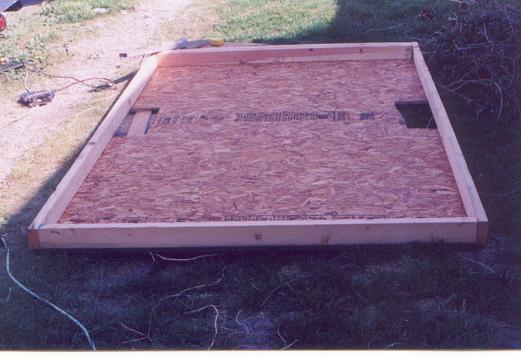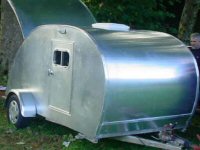Is osb sheathing ok to use on the floor
18 posts
• Page 1 of 2 • 1, 2
Is osb sheathing ok to use on the floor
I have decided on a 5 ft teardrop and am trying to save a little money on the floor so I can spend more on other things. I saw that sheathing was really cheap compared to plywood so I was wondering if it would be fine and how thick does it need to be.
- zlamb0002
- Teardrop Builder
- Posts: 29
- Joined: Sat Aug 02, 2008 11:20 pm
- Location: KY
Hope so that's what I used.
Span specs say 1/2" at 2' on center supports and 3/4 at 3' o/c .
Some will tell you the osb will fall apart but the newer osb will NOT the old stuff was oxboard and WAS junk.
I have my small trailer coated with 2 heavy coats of polar seal (that rubberized mobile home coat) and it has sat out 2 1/2 years rain and sun and snow with absolutely no signs of swelling or flaking. Since there is no direct live load on the floor 1/2 would probably work just fine. If you are unaware there is 5/8 available also.

Span specs say 1/2" at 2' on center supports and 3/4 at 3' o/c .
Some will tell you the osb will fall apart but the newer osb will NOT the old stuff was oxboard and WAS junk.
I have my small trailer coated with 2 heavy coats of polar seal (that rubberized mobile home coat) and it has sat out 2 1/2 years rain and sun and snow with absolutely no signs of swelling or flaking. Since there is no direct live load on the floor 1/2 would probably work just fine. If you are unaware there is 5/8 available also.
Growing older but not up !
-

bobhenry - Ten Grand Club

- Posts: 10368
- Images: 2623
- Joined: Fri Feb 09, 2007 7:49 am
- Location: INDIANA, LINDEN

 Danny
Danny


